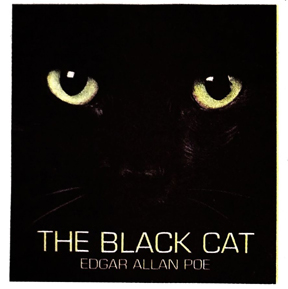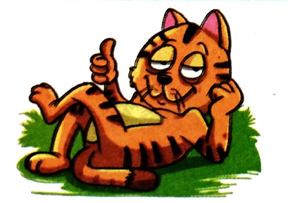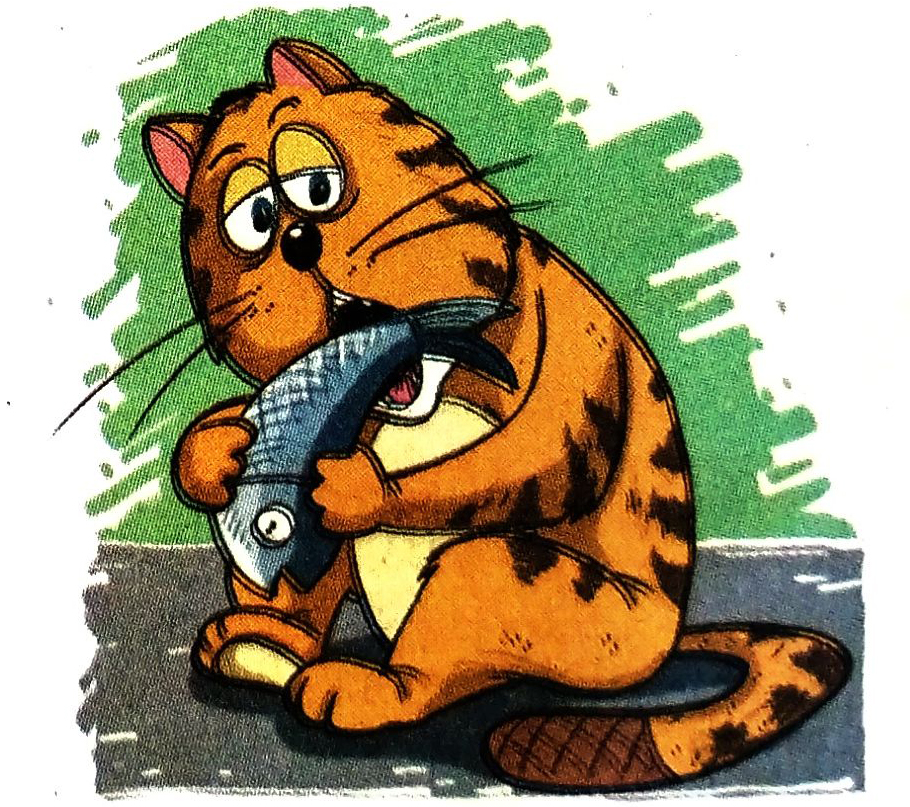WBBSE 10th Class English Solutions 3 The Cat
West Bengal Board 10th Class English Solutions 3 The Cat
WBBSE 10th Class English Solutions
SURVEY
Topic: Identifying sentences that can be split into short, simple sentences.
Learning outcome: Ability to identify those long sentences that can be broken up into two or more small sentences.
Teacher’s role: Dividing the class into groups and assigning specific tasks to each group.
Students’ role: Engage in groups to identify the type of sentences assigned to them and to split them.
Time: 1 (one) period.
Assessment procedure: Written records of the students will be assessed.
ASSIGNMENT GIVEN TO STUDENTS
PART – I : Group Work
Like any prose piece ‘The Cat’ has many long sentences, that can easily be split into short simple sentences. Find 5 such sentences and write them. When the survey is over, prepare a report together. Your report must mention what would have happened if the writer had used shorter sentences.
PART – II: Individual Work
Now split each of the long sentences found in the text into two or more short, simple sentences.
ASSESSMENT WORK SUBMITTED BY STUDENT(S)
PART – I
| Group A (Unit 1) |
Group B (Unit 2) |
Group C (Unit 3) |
| 1. Most people think that the cat is an unintelligent animal, fond of ease and caring little for anything but mice and milk. |
When the family sits down to tea, the cat puts in an appearance to get his share. |
When the family has finished tea and gathers round the fire the cat casually goes out of the room. |
| 2. But a cat has really more character than most human beings and gets a great deal more satisfaction out of life. |
If there is a guest at the table the cat is particularly civil to him, because the guest is likely to have the best of what is offered. |
He saunters down his own backyard, springs to the top of the fence, drops lightly down to the other side. |
| 3. He—or she— is an athlete, an acrobat and a grim fighter. |
He puts up his claw and quietly but firmly rakes the guest in the leg. |
He looks keenly from side to side and moves noiselessly, for he has so many enemies-dogs and small boys with stones. |
| 4. All day long the cat loafs about the house, takes things easy and allows himself to be pestered by the attentions of the people in the house. |
The guest dare not do what he would like to do- kick the cat out of the window. |
Then, drooping his head nearly to his paws, he sends across a call to his kindred. |
| 5. People get this idea that this sort of thing is all that holds life for a cat. |
He purrs as he retires to a safe distance from the guest’s boot before eating his food. |
No longer are they meek creatures who an hour ago were mewing for fish and milk. |
Report of the Survey
It is crystal clear that had the writer used short simple sentences only, the impact would have been different. The sentences would have lost their fun. They would not have been able to maintain the fluidity of the narrative then.
PART – II
GROUP – A
UNIT-I
1. The cat is an unintelligent animal. He is fond of ease. He cares little for anything but mice and milk. Most people think so.
2. But a cat has really more character than most human beings. It gets a great deal more satisfaction out of life.
3. He or she is an athlete. He or she is an acrobat. He or she is a grim fighter too.
4. All day long the cat loafs about the house. He takes things easy. He allows himself to be pestered by the attentions of the people in the house.
5. This sort of thing holds life for a cat. That’s all. People get this idea.
GROUP – B
UNIT-II
1. The family sits down to tea. The cat puts in an appearance then. He does so to get his share.
2. There may a guest at the table. He is offered something. He is likely to have the best of it. So, the cat is particularly civil to the guest.
3. He puts up his claw. He quietly but firmly rakes the guest in the leg.
4. The guest would like to do something. He would like to kick the cat out of the window. But he dare not do it.
5. He eats his food. But before it, he retires to a safe distance from the guest’s boot. He then purrs.
GROUP – C
UNIT-III
1. The family has finished tea. The family gathers round the fire. The cat then casually goes out of the room.
2. He saunters down his own backyard. He springs to the top of the fence. He drops lightly down to the other side.
3. He has so many enemies-dogs and small boys with stones. So, he looks keenly from side to side. He moves noiselessly.
4. Then he droops his head nearly to his paws. He sends across a call to his kindred.
5. An hour ago they were mewing for fish and milk. No longer are they meek creatures.
NATURE STUDY
Topic: Studying nature through literary text.
Learning outcome: Ability to think critically about the nature of an animal like the cat.
Teacher’s role: Assigning á reading comprehension task extracted from the text book (Lesson 7) and setting questions to develop critical thinking.
Time: 1 (one) period.
Students’ role: Reading the passage to understand the nature of a pet animal.
Assessment procedure: Written records of the students will be assessed.
ASSIGNMENT GIVEN TO STUDENTS
Read the following passage. It is quoted from ‘The Cat’. Though studied earlier, please re-read so that you can answer the questions given after the passage.
The guest dare not do what he would like to do-kick the cat out of the window. So, with tears of rage and pain in his eyes, he affects to be very much amused, and sorts out a bit of fish from his plate and hands it down. The cat gingerly receives it, with a look in his eyes that says, “Another time, my friend, you won’t be so slow to understand.” He purrs as he retires to a safe distance from the guest’s boot before eating his food..
Answer the following questions:
1. Why doesn’t the guest do what he would like to do?
2. Why does the cat retire to a safe distance from the guest’s boot?
3. What features of a man’s character are revealed here? Classify these features as positive and negative aspects?
4. What traits of a cat’s character do you find here?
ASSESSMENT WORK SUBMITTED BY STUDENT(S)
1. The cat was a family pet. The guest being a gentleman does not want to hurt the sentiment of the host. So he does not do what he would like to do.
2. The cat knows well that the guest is not at all happy with him. Given a chance, he would kick him. So the cat maintains a safe distance.
3. [a] Positive features of a man’s character as revealed in the given text-(i) capability to control emotion, (ii) reluctance to shrug gentlemanly behaviour off. [b] Negative features of a man’s character as revealed in the given text-(i) selfish, (ii) pretentious, (iii) insensitive to animals.
4. The following traits of a cat’s character are revealed in the given text-(i) He is well aware of the fact that his mischief can be retaliated at any point of time. (ii) He can read a person’s mind very well. (iii) He can threaten others with looks. (iv) He does everything very carefully.
IMAGINARY CONVERSATION
Topic: An imaginary conversation between two cats about man’s attitude towards animals.
Learning outcome: Critically think about animals around us and our behaviour towards them.
Teacher’s role: Arranging a group activity-a role play or an imaginary conversation.
Time: 1 (one) period.
Students’ role: Discussing the topic with peers.
Assessment procedure: Written records of the students will be assessed.
ASSIGNMENT GIVEN TO STUDENTS
Write an imaginary conversation between two cats about human behaviour. They must not only criticize human beings. They must converse in such a manner that both their satisfaction and frustration will be expressed.
ASSESSMENT WORK SUBMITTED BY STUDENT(S)
Cat 1: I’m tired of these two-legged creatures. They always think of themselves. They never bother about our well-being.
Cat 2: No, no, no. It’s not like that. The family with whom I live is very kind to me. They always share good food with me.
Cat 1: Sharing! That too good food! Are you dreaming? They stroke my back. They call me “Poor pussy! Poor pussy!” But I’m a regular consumer of scraps. Simply hypocrites!
Cat 2: Actually all men are not same. Some are good and affectionate.
Cat 1: But most are not.
Cat 2: Don’t I know it? The other day a guest came to our house. When he taking food, 1 at him with expectation in my eyes. started looked
Cat 1: What did he do then?
Cat 2: That fellow simply stooped down and stroked me.
Cat 1: Did you spare that guy?
Cat 2: No. I raked him in the leg with my claws.
Cat 1: Did the others beat you?
Cat 2: No. The members of the family made him understand that I wanted something from him to eat. Cat 1: What did the fellow do then?
Cat 2: He gave me a bit of fish from his plate. But I knew, getting a chance he would kick me out of the window. So, I took the fish and retired to a safe distance from his boot and then started eating.
Cat 1: You naughty pussy!
Cat 2: (smiles) No, no. I’m a poor pussy.
CASE STUDY
Topic: The cat and man
Learning outcome: Ability to analyse and evaluate through introspective study.
Teacher’s role: Providing a case to the students and engaging them to solve the problem.
Time: 1 (one) period.
Student’s role: Discussing the topic with peers for problemsolving.
Assessment procedure: Written records of the students will be assessed.
ASSIGNMENT GIVEN TO STUDENTS
In ‘The Cat’ you have learnt about the mutual relationship of the cat and man. In the extract given below, the subject is almost the same though the way of presentation is different. Now read it carefully and try to give answers to the questions that follow:
Hundreds of millions of cats are kept as pets around the world. Cats are also used in the fur trade, as food and to control pests. Cats and humans evolutionarily diverged from a common ancestor (boreoeutherian ancestor) approximately 80 million years ago, accumulating only 10-12 chromosomal translocations. The order of several genes in chromosomes X and Y in cats closely resembles that in humans. Cats are common pets in all continents of the world, and their global population is difficult to ascertain, with estimates ranging from anywhere between 200 million to 600 million. According to the Humane Society of the United States, as well as being kept as pets, cats are also used in the international fur trade. Cat fur is used in coats, gloves,

hats, shoes, blankets and stuffed toys. About 24 cats are needed to make a cat fur coat. This use has now been outlawed in several countries, including the United States, Australia and the European Union. It has long been common for cats to be eaten in some parts of China and in some other Asian countries. ‘Animal People’ estimates that 4 million cats are killed and consumed in Asia every year.
Answer the following questions:
1. What is biologically common between man and the cat?
2. Why has the use of cat in fur trade been outlawed in many countries?
3. Both in ‘The Cat’ and in the given extract, you find some instances that show man’s sensibility to a cat. Is there any difference between these instances?
4. We keep cat as pets. Again, we eat cat’s flesh. Can a pet be eaten? Justify your answer.
ASSESSMENT WORK SUBMITTED BY STUDENT(S)
1. Cats and humans evolutionarily diverged from a common ancestor. Besides, the order of several genes in chromosomes X and Y in cats closely resembles that in humans.
2. Cats are killed recklessly for this purpose. As a result, the cat may be an extinct species in future. That is why, the use of cat in fur trade has been outlawed in many countries.
3. In ‘The Cat’ we find that the guest is reluctant to give the cat a bit of his food. He is, no doubt, insensitive. But in the given extract, we find that man is so cruel that he kills the cat for fur trade and food. It is, no doubt, a more serious example of insensitivity.
4. It sounds barbaric, but it happens. We rear poultry and animals in farms just to kill and eat them. Besides, cats are not usually killed for consumption in those parts of the globe where they are kept as pets.
CREATIVE WRITING
Topic: Writing a composition.
Learning outcome: Ability to develo a composition from a given lead.
Teacher’s role: Providing the cue of the composition, engaging them into group discussion, facilitating their efforts to imagine situations and motivating them for creative writing.
Time: 1 (one) period.
Students’ role: Discuss in groups and develop the lead into a compact composition.
Assessment procedure: Written records of the students will be assessed.
ASSIGNMENT GIVEN TO STUDENTS
Suppose cats are tired of human misbehaviour. So they want to issue a notice for men stating some do’s and don’ts.
Discuss in groups. Write the notice on behalf of the Cat Society. Therein state clearly what man is expected to do and what he is forbiddin to do in order to safeguard the interest of cats. The prose piece ‘The Cat’ itself may help you in this regard.
ASSIGNMENT GIVEN TO STUDENTS
Read the following text. Compare and contrast it with the situation in ‘The Cat’. This will help you to answer the following questions.
The Black Cat
Observing my partiality for domestic pets, my wife lost no opportunity of procuring those of the most agreeable kind. We had birds, gold-fish, a fine dog, rabbits, a small monkey, and a cat.
This latter was a remarkably large and beautiful animal, entirely black, and sagacious to an astonishing degree. In speaking of his intelligence, my wife, who at heart was not a little tinctured with superstition, made frequent allusion to the ancient popular notion, which regarded all black cats as witches in disguise. Not that she was ever serious upon this point- and I mention the matter at all for no better reason than that it happens, just now, to be remembered.
Pluto this was the cat’s name was my favourite pet and playmate. I alone fed him, and he attended me wherever I went about the house. It was even with difficulty that I could prevent him from following me through the streets.
Our friendship lasted, in this manner, for several years, during which my general temperament and characterthrough the instrumentality of the fiend intemperance had (I blush to confess it) experienced a radical alteration for the worse. I grew, day by day, more moody, more irritable, more regardless of the feelings of others. I suffered myself to use intemperate language to my wife. At length, I even offered her personal violence. My pets, of course, were made to feel the change in my disposition. I not only neglected, but ill-used them. For Pluto, however, I still retained sufficient regard to restrain me from maltreating him, as I made no scruple of maltreating the rabbits, the monkey, or even the dog, when by accident, or through affection, they came in my way. But my disease grew upn me-for what disease is like alcohol?-and at length even Pluto, who was now becoming old, and consequently somewhat peevisheven Pluto began to experience the effects of my illtemper.

One night, returning home, much intoxicated, from one of my haunts about town, I fancied that the cat avoided my presence. I seized him; when, in his fright at my violence, he inflicted a slight wound upon my hand with his teeth. The fury of a demon instantly possessed me. I knew myself no longer. I took from my waistcoat pocket a pen-knife, opened it, grasped the poor beast by the throat, and deliberately cut one of its eyes from the socket! I blush, I burn, I shudder, while I pen the damnable atrocity.
[Adapted from ‘The Black Cat’ by Edgar Allan Poe]
Answer the following questions:
1. Give reasons for the following statements.
(a) The author’s wife gifted him a black cat.
(b) The author blushes, burns and shudders.
2. There are some similarities and dissimilarities between the man in the given text and the people in ‘The Cat. Mention these similarities and dissimilarities.
3. Do you think that the wife’s superstitious belief somehow affected the author? Give reason for your answer.
ASSESSMENT WORK SUBMITTED BY STUDENT(S)
1. (a) The author had special fascination for domestic pets. So, his wife presented him a black cat along with some other pets.
(b) The author cut one of the eyes of Pluto only because he was not his own self then. The fury of a demon possessed him, taking advantage of his intoxicated condition. But when he pens the incident, he is his normal self. So he blushes, burns and shudders out of shame and repentance.
2. In ‘The Cat’ we find two types of people. The host is kind to the cat, but the guest is insensitive to him. None of them is, however, as cruel as the narrator in the given text. Actually, in the given excerpt, the narrator undergoes a change. His attitude towards Pluto transforms from that of the host in ‘The Cat’ to that of the guest in the same prose piece.
However, in ‘The Cat’ we find no such superstitious character as the author’s wife.
3. No, the author was not influenced by his wife’s superstitious belief directly. However, it might have cast its shadow over his subconscious.






